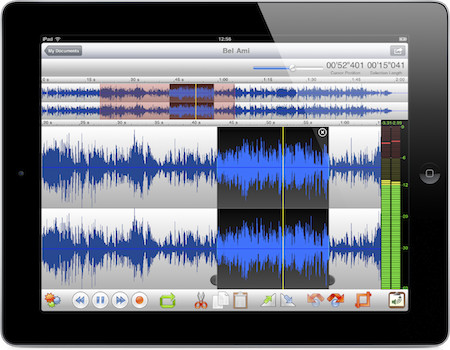

If one is making a long recording such as a book, TwistedWave will recognize the words of the audio and synchronize it with the text. New to TwistedWave is speech recognition. I can also batch process files with changes such as fade in/out, etc.

The application can convert audio files to different formats. I can equalize, compress, or use hundreds of audio plugins. If you have two red marks the cursor can easily select between them snapping to your lines so you can correct exactly the area you marked. Often when listening back, if there is a mistake, I just click “m” and immediately the file is marked with a red line so I can easily find it later.

It’s easy to zoom into a certain time in your recording or see the entire audio file. Prima di scoprire come utilizzare questo strumento, è necessario conoscerne le caratteristiche e altri punti chiave. TwistedWave Audio Editor è un eccezionale editor audio che offre una raccolta completa di funzioni per facilitare lediting audio.
TWISTEDWAVE PRO
The sound bars on the side that rise and fall with my audio levels help keep the audio consistent.= Parte 2: TwistedWave Audio Editor: Caratteristiche Principali, Pro e Contro. Record stereo audio with the built-in microphone (iPhone XS or more recent) Precision Time Stretching & Pitch Shifting technology licensed. Even when working with huge files, it will remain very fast and fluid, and will never run out of memory. I really like how I can see the waveform as I record and then can go back and easily select areas with mistakes, simply delete them, and re-record. TwistedWave is a very fast and easy to use audio editor and recorder. After using it for only a short time, TwistedWave has become the application I use for all my audio recordings and editing.
TWISTEDWAVE FULL
I then reached out to the developer to see if I could get a full copy to try all the features and to write a review, to which he agreed. It’s an all-in-one solution for everything related to audios, and the great thing is, it’s super simple to use for anybody.
TWISTEDWAVE TRIAL
I tried the trial version and really liked the application. TwistedWave With the ability to record, master, convert and batch process your audio, TwistedWave was bound to make it to this list. I was very wrong and glad I gave it a chance.
TWISTEDWAVE SOFTWARE
I thought that software developed by one person would be lacking in appearance and performance. I must admit, I was hesitant to use TwistedWave because it is written by one person. TwistedWave does all I need and so much more. I want a clean, professional app, and I found exactly that in TwistedWave. There are even some purchased apps that have embedded ads encouraging me to buy their other products. There are some free and “shareware” apps, but those just do not seem very professional with the look and performance on the Mac. I need to simply record, edit the waveform, and then save. GarageBand and Logic Pro from Apple are overly complex for what I need. There are many on the market, but none seemed to be what I was looking for. So to answer my own question: "A snap" is roughly 1 ms.I’ve been using a Mac for many years and prefer it for many reasons, but I’ve struggled to find a good audio editor. With TwistedWave on your iPad or iPhone, you can record and edit anything, anywhere.
TWISTEDWAVE FOR MAC
Here is the monster MP3 exported from the 1 ms selection above (1579 bytes including useless tagging info) (Edit: removed broken link to the audio file, but imagine it: it sounds like - you guessed it - a snap! Reproduction is left as an exercise for the reader.) TwistedWave for Mac a very powerful and yet very easy to use audio editor. So I decided to go empirical - if I listened to an ever shorter section of the snap, at what point did it cease to sound like a snap? I was surprised to hear that even at 1/1000 second it is recognizable as a snap: There are some challenges - what is the snap in the snap? Does it start with the sound of your finger gliding over your thumb, and where does it end? I recorded my snap under definite sub-optimal conditions, using the built in microphone of an iMac inside a 14x10 office with plaster walls - it was hard to tell where the snap ended and the echo began.Īnd even so, as with snaps above, there is a definite, very short primary sound that is much louder than the secondary reverberations which go on for quite some time. I took advice and downloaded Audacity and did a number of measurements.


 0 kommentar(er)
0 kommentar(er)
